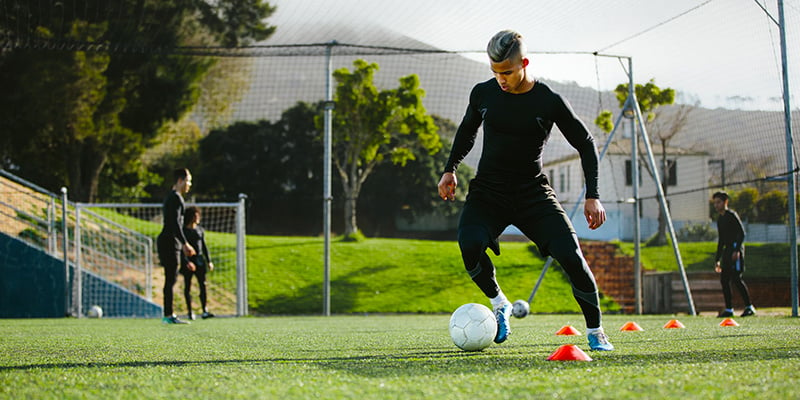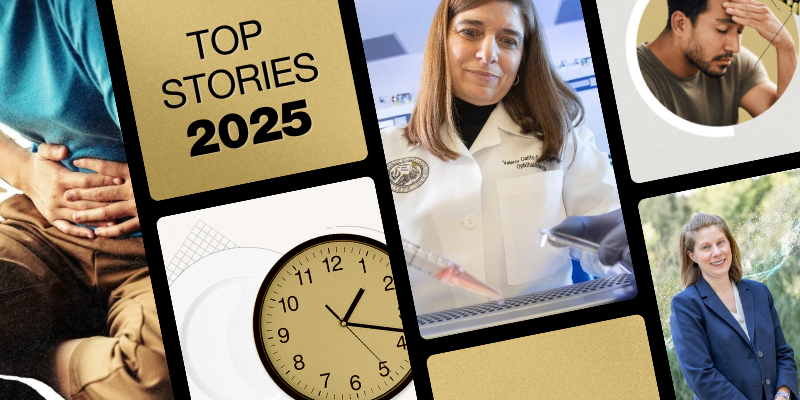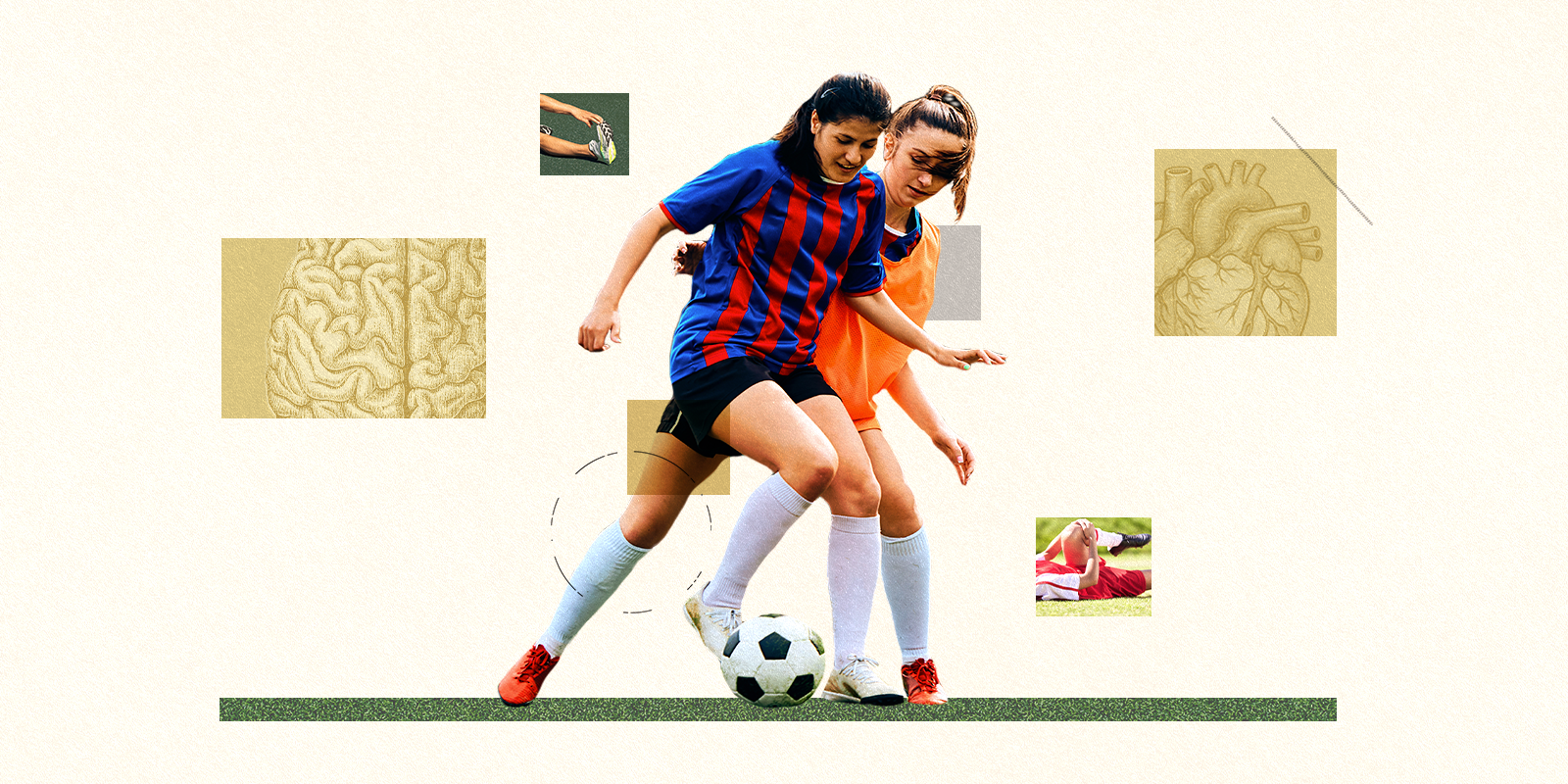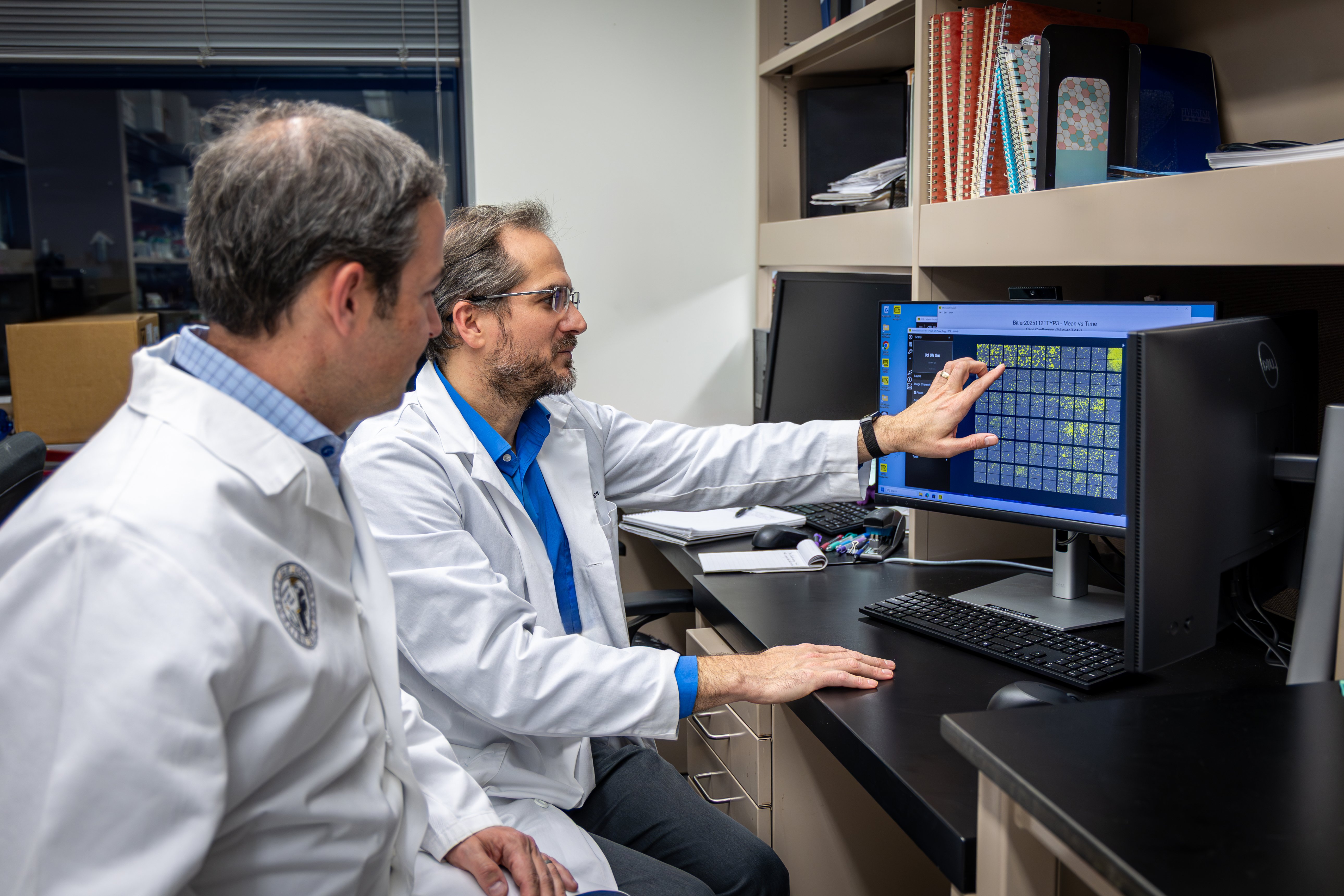Can you explain the challenges people face when recovering from a concussion?
It’s a mild traumatic brain injury – defined as a trauma-induced alteration of neurological function. This affects the core of who you are, what you do, and it affects all facets of life. It’s challenging from a clinical standpoint because the presentation is variable from person to person. Symptoms range from headache to dizziness to mood changes, trouble sleeping, feeling sad – all are directly attributable to a concussion.
The pendulum has swung quite a bit with concussion care. Twenty-five years ago, a concussion happened, it was not viewed as a big deal, and people played through it. Then we learned that’s not the way to go; we should take care of our brains if they’re injured. Then the pendulum swung a little bit too far, to the point where patients were told you should sit in a dark room and not do anything until your symptoms go away. Now we’ve arrived at the fact that the patient should be moving in a safe manner after the injury. And through that process we have a pretty clearly defined path to get patients feeling better and ultimately back to sports, or work or back to duty in the military population.
The challenge then becomes, for short- and long-term health, how do you set the person up for success? How do you facilitate brain health and optimize that kind of healing environment?
And that’s where this study picks up?
Yes, there is a gap of what happens when you actually go back to play. You go back to life, you go back to work, back to duty. And what we’ve seen emerge secondarily over the last five to 10 years in the literature is that athletes, military personnel, the general public, go back into whatever they were doing, and they now have a higher risk of subsequent injuries that happen over the next six months, year, two years.
Why is that happening?
We’ve started to recognize that the tools we’re using for concussion diagnosis might not be sufficient for us to actually understand whether physical deficits – small deficits that maybe aren’t observable without a more precise estimation – exist. So, we think that those continual, subtle neurological deficits might be contributing to some problem that we’re not detecting clinically.
In the context of sports, or just going back to regular life, if that deficit hasn’t been resolved or the underlying problems haven’t fully recovered, now you’re more likely not to just sustain another concussion, but to sustain a lower-extremity musculoskeletal injury – anything from an ankle sprain or a hamstring strain, to an ACL tear, you name it. And so that’s really where this study picks up.
Do athletes present particular challenges in picking up on these subtle neurological deficits?
Especially for athletes, what we found is that one of the key deficits is in that neuromuscular control. Those deficits often outlast self-reported symptom resolution. We’ve realized there needs to be more thought around the neuromuscular control system.
Dual-task ability is another area of concern. When a post-concussion patient is doing something in isolation – we do tests, for example, that show their reaction time, their memory, their balance, their motor function all looks good. They can perform each task quite well in isolation. But when they have to combine any of those things at the same time, we often see that their brain’s ability to execute both things is diminished.
So, we realized that neuromuscular control and dual-task ability are diminished in concussion patients. From a rehabilitation standpoint, we needed to focus on those areas to protect people as they reintegrated back into sports and their active lifestyles. The virtual NMT study was the next phase from a prior study where we had an athletic trainer meet with athletes for eight weeks as they reintegrated into sports. The athletes went through a progressive neuromuscular and dual-task training program. Through that, we found that intervention was efficacious in reducing injury risk over the following year. However, it was also quite difficult to administer the intervention in a one-on-one format.
We realized that there are a lot of patients in Colorado, for example, who can’t readily access qualified healthcare professionals who can guide them through this type of rehabilitation.
In the military context, the patients are often overseas or they’re moving around a lot, just by the nature of the job. So, to have something that we digitize and put in a virtual training environment is the next step. We wanted to take the same proven rehabilitation program and put it in a self-guided program with exercise regimen instructions and some videos. Another advantage of that was we could monitor how often the study participants were accessing the information, duration of their workouts, whether they were adhering to the program.
How does the NMT program work?
We thought, if somebody sustained a concussion, how could they download an app and have rehabilitation information at their fingertips? We worked with a collaborator (Vipul Lugade, PhD) who helped us develop each step of this novel smartphone app. The program is a 24-session, eight-week progression of exercises that patients can do at home. We rolled this out to 20 people, ages 22 to 39, who weren’t injured; we let them test it.
What were the results?
This work was led by Samantha Magliato, MS, who was a research professional in our laboratory at the time of the study. Participants were moderately adherent (>50%) to the virtual NMT program. The biggest limitation to doing these exercises was just time. On average, on a 10-point scale, participants rated that the app was easy to use, had clear instructions and that they were overall satisfied with the experience.
We are in the process of rolling the virtual NMT program out to a population with a recent concussion, but we’re a ways out from publishing those findings.
Overall, the results of our feasibility study are good, but the work is not done. We want to use these findings to optimize how easy this program is to use, how clear the instructions are, and how satisfied people are with it. Because at the end of the day, if we’re not delivering a customized, individualized treatment plan that actually meets the needs of the population of interest, it’s not going to do anything for those patients that may benefit from this type of intervention.
We know this type of intervention has preliminary evidence that it’s beneficial. And so, we’re trying to bridge that gap of accessibility and scalability to a larger audience. This is certainly not a magic pill that’s going to cure concussions, but it’s an additive element that might help a majority of people trying to reintegrate into the things they want to do and have less risk of future injury.





